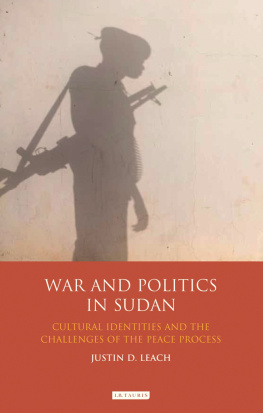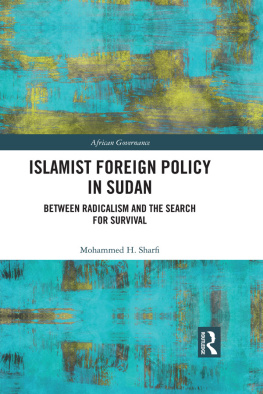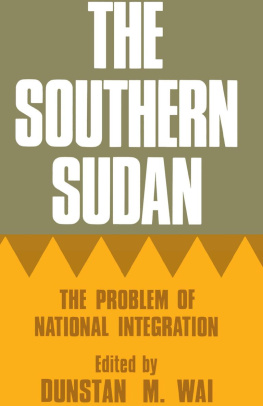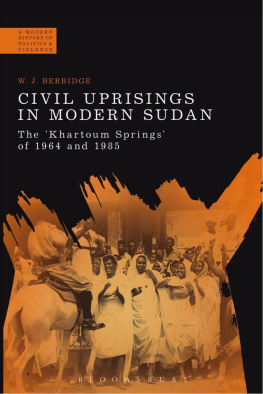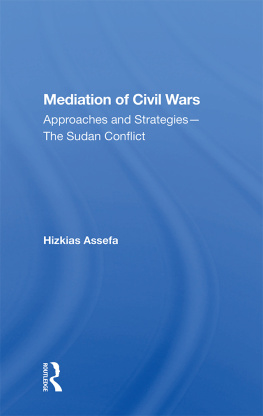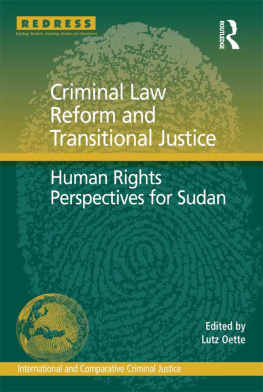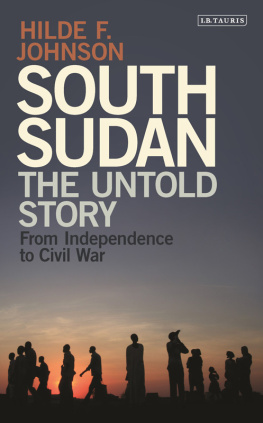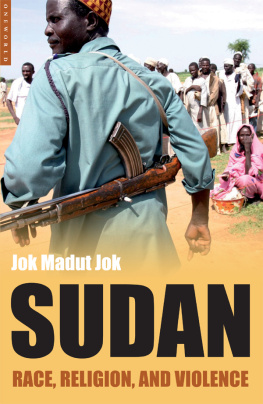Published in 2011 by I.B.Tauris & Co Ltd
6 Salem Road, London W2 4BU
175 Fifth Avenue, New York NY 10010
www.ibtauris.com
Distributed in the United States and Canada
Exclusively by Palgrave Macmillan
175 Fifth Avenue, New York NY 10010
Copyright 2012 Justin Leach
The right of Justin Leach to be identified as the author of this work has been asserted by the author in accordance with the Copyright, Designs and Patent Act 1988.
All rights reserved. Except for brief quotations in a review, this book, or any part thereof, may not be reproduced, stored in or introduced into a retrieval system, or transmitted, in any form or by any means, electronic, mechanical, photocopying, recording or otherwise, without the prior written permission of the publisher.
International Library of African Studies 36
ISBN 978 1 78076 227 2
A full CIP record for this book is available from the British Library
A full CIP record for this book is available from the Library of Congress
Library of Congress catalog card: available
Typeset by Newgen Publishers, Chennai
PREFACE
Regarding Sudanese conflict, the question Why are they fighting? first interested me while living in Sudan at the start of the second civil war. My mother, a medical attach at the US Embassy, arrived in Khartoum during the summer of 1984. The question provoked a flurry of sometimes contradicting responses from adults and other children of various nationalities at my school: narratives of oppression and colonialism, Islamic law, oil interests, tribalism, and the hand of such foreign antagonists as Libya, Israel, and Ethiopia. Individual names to the conflict loomed large: Nimeiri, Garang, Sadiq. The fate of the country seemed to hinge upon the will of a handful of men.
Years later, I would see that same blizzard of motivations for war put forth in media reports and diplomatic statements. By the time of the signing of the Comprehensive Peace Agreement (CPA) in January 2005, the causes of war had grown even more complex. Having already discovered the importance of individual personalities in Sudanese politics, I paid even more attention to the CPA after the shocking death of John Garang in July 2005. Would the agreement, so dependent on negotiations between elites, collapse? Would Khartoum see the tragedy as an opportunity to renege on a peace agreement? Would the new leadership of separatist-minded Salva Kiir forego any pretense of unity in the interim period?
Understanding what kept peace deals together took on a new importance for me. I looked to the 1972 agreement between Khartoum and the Anya Nya separatists to find what lessons could be gleaned for the new agreement. Upon reading some of the major literature on the events of that era, I saw that the distribution of similarities and differences between the two agreements might allow for a more detailed comparative analysis. I had already been considering such a study between the CPA and other African peace agreements but was frustrated. I felt that such comparisons neither accurately conveyed the significance of either peace treaty nor produced a better understanding of the countries involved. A comparison of two or three detailed case studies, I felt, was also too limited to promote theories about conflict resolution in general.
Comparing peace treaties concluded at different periods within the same state was an unconventional approach, but I believed that, even if it did not explain or rule out broader theories, it might better explain the history of modern Sudan in particular. For a state where domestic conflict is the norm, successful peacemaking efforts must be scrutinized at least as thoroughly as the origins of conflict. By examining the bargaining process, the provisions agreed upon, and the greater political environment, I hoped to find new explanations for Sudans unique and violent post-colonial history.
The secession of South Sudan in 2011 and the re-emergence of debate over the nature of African states give added urgency to the need for a longer history of war in Sudan. Many readers drawn to study the conflict may still wish for comprehensive answers to the question of why, after several decades of independence, Khartoum finally agreed to allow the region to break away peacefully. Why did it occur under this government and not earlier ones, whether autocratic or parliamentary? How could a regime implicated in such consistent brutality against its own people allow one third of the country, rich in oil and strategically located along the Nile, to secede?
Part of my attempt to answer these questions requires explaining how the current regime in Khartoum has attempted to manipulate the national identity of northern Sudanese to preserve its own power. The junta of Omar Hassan Al-Bashir continues to uphold the Arab identity that was so integral to northern nationalism in Sudan, but this identity was for decades forced to give space to Islam as the dominant cultural force in state building. An emphasis on Arab identity reemerged after the Machakos peace process began in 2002, and especially after the Darfur insurrection erupted in 2003. The identity shift served to motivate the Arabized clients of the regime against the non-Arab populations assumed to support insurgents in remote northern areas. As the south prepared to become its own nation, the states neo-patrimonial networks were forced to adjust, and the new line of division rests along the Arab/non-Arab schism.
For over a decade now, the National Congress Party (NCP) regime has had no ideological core. The momentum of its early Islamist project propelled it for a time after the dismissal of Hassan Al-Turabi, its chief Islamist ideologue. Turabi, however, encouraged the Darfur insurgency, which was fought in part by a group aligned with him against his erstwhile government allies. Opposition from Sudans leading Islamist has led the regime to lean more heavily on Arab unity as a source of legitimacy. Because there is no longer any serious ideological commitment behind either Arabism or Islamism aside from preservation of the regime, they are virtually indistinguishable. Those fighting Khartoum in the hinterlands of South Kordofan and the Abyei subregion, Darfur, Blue Nile and elsewhere have been left out of the new patronage system, contracted substantially in preparation for the loss of the revenue from southern oil that sustained Khartoum for many years.
South Sudan, too, will seek to form a national identity in the wake of its independence, a goal consistently shared by the vast majority of the population since the first civil war. Few peoples in the world have fought for their own state as long as the southerners while simultaneously forming so few bonds among themselves as countrymen. Southern nationalists dreamt for over half a century of 9 July 2011. The history over the past year of fighting along the north-south border, continued disputes over oil revenue, corruption and intra-South Sudan infighting indicate that the regions troubles are not yet behind it. I hope this history of Sudanese attempts at peace will shed light on some of the challenges both Sudans may face going forward.

